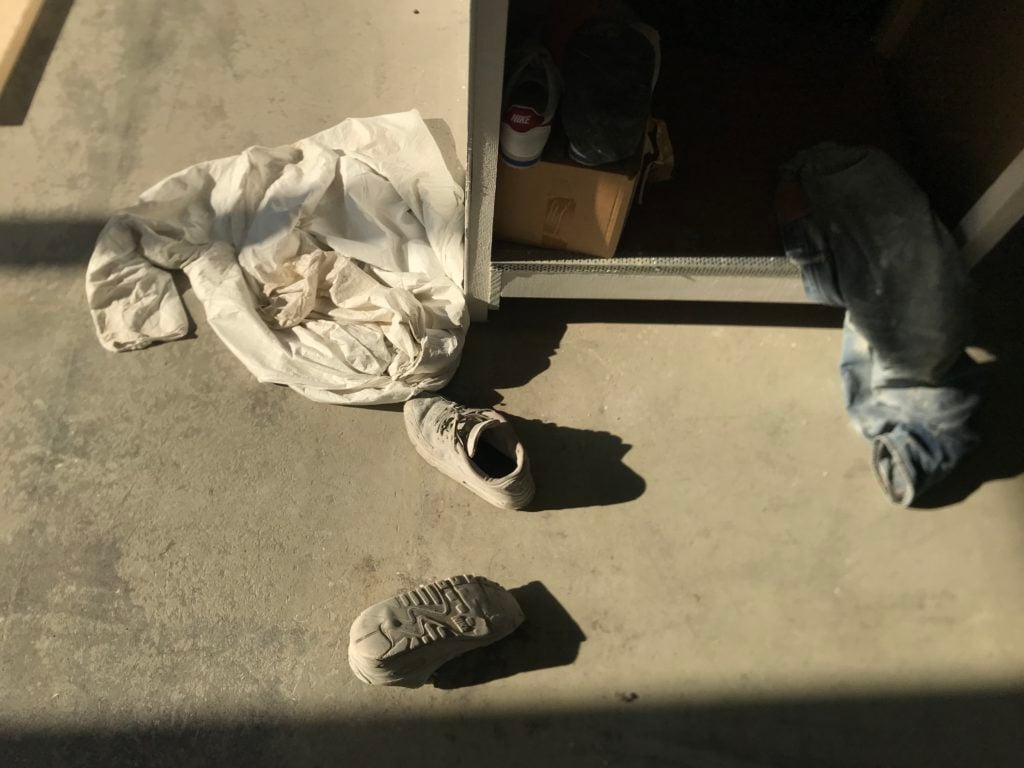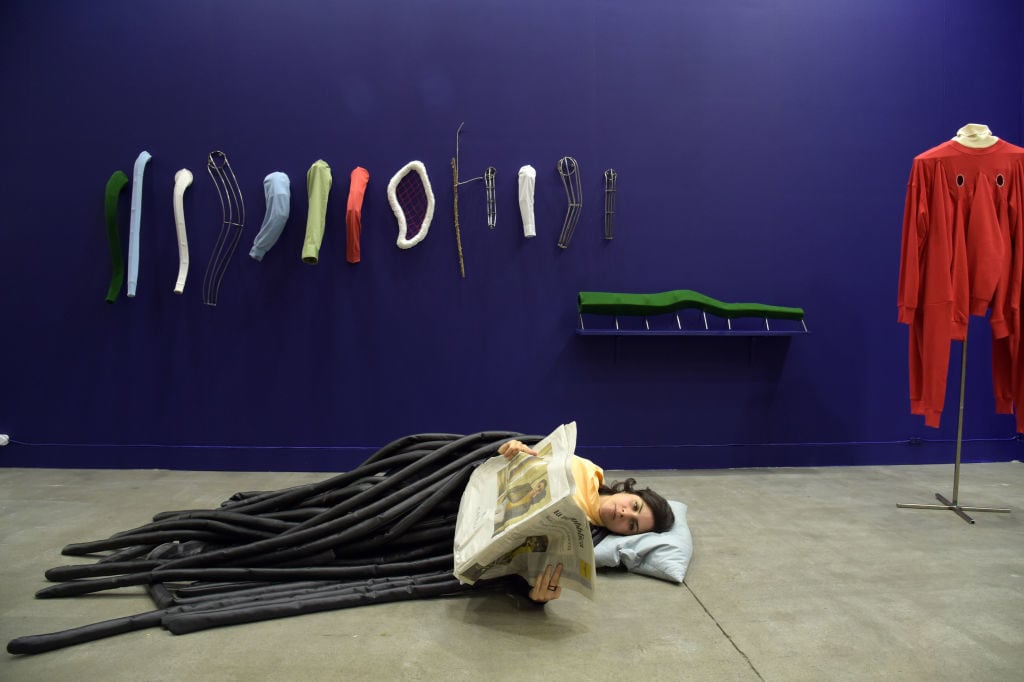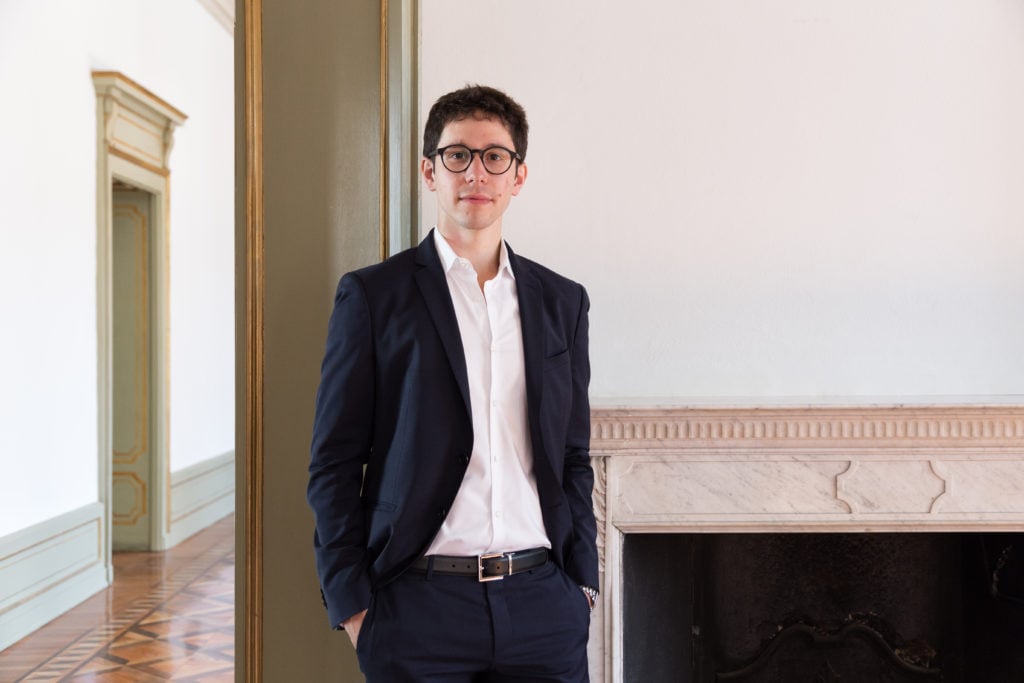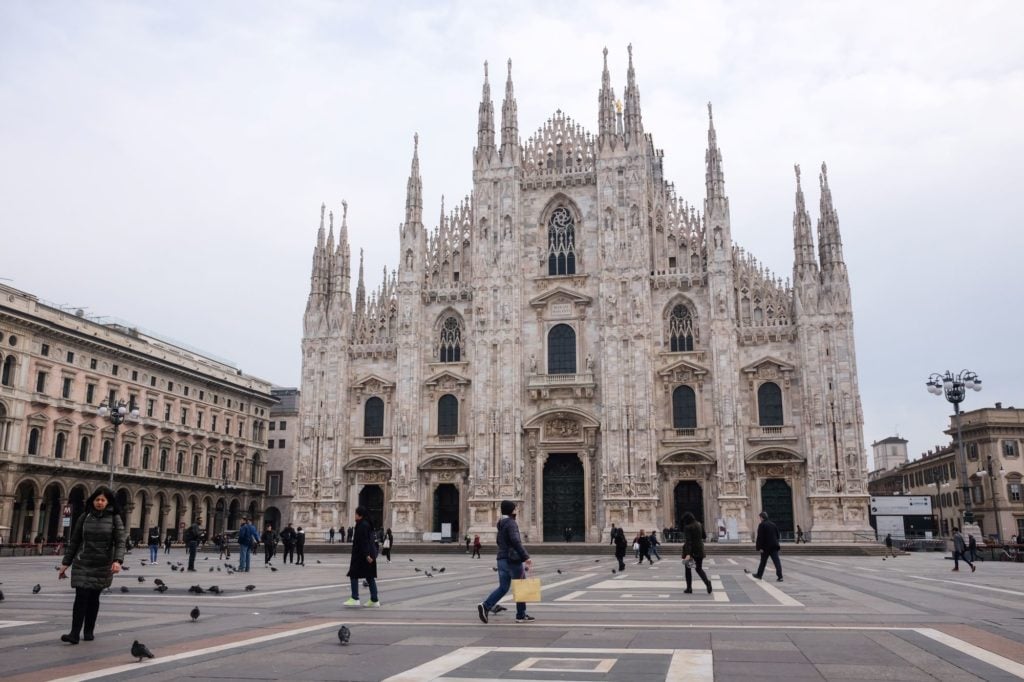The singing on the balconies has stopped.
As Italy enters its second month of lockdown, the ornate streets have fallen quiet and signs of fatigue have begun to set in. Isolation and a pervasive sense of loss seem to be grinding down the spirits of those known around the world for their vibrant and sensorial culture—especially in the Northern Lombardy city of Milan, where fashion, design, and art are the most important industries. And though the daily death toll seems to be reaching a plateau—Lombardy reported 7,176 coronavirus deaths in March—officials recently extended the nationwide lockdown by at least another few weeks.
From the outside, then, Milan’s art world appears to be at a standstill. Miart, the Italian city’s international art fair, has been rescheduled from April to September, and authorities have converted its venue, the fieramilanocity, into a temporary hospital. The city’s design fair, Il Salone del Mobile, which brings thousands of tourists to Milan every June, has been cancelled.
Behind the scenes, however, dealers, artists, and curators are doing their best to remain engaged in their work and with each other. They are hatching ideas for how to raise money for those affected by the health crisis and how to advocate for broader governmental support of culture. If Milan offers a window into what cities like New York and London might experience in a few weeks’ time, the takeaway is that members of the art world will find a way to connect—even if they aren’t always feeling particularly inspired.
“Creatively speaking, the first period was not very fruitful as the actual fear of something unknown prevailed,” the Milan-based artistic duo MASBEDO tell Artnet News. Before long, however, they began to create videos and perform interventions through their cell phones and computers. “Art and culture do not stop, or at least it refuses to stop,” the artists say.

An iPhone pic from Dominic Samsworth’s studio before he left it in the impending lockdown. Courtesy the artist.
Resetting the Art Market
Around the world, the pandemic has exposed weaknesses in political and cultural systems, which were already threadbare in many places. “Metaphorically, this is a pop quiz which requires, in the near future and not just today, considerable efforts and several months, or perhaps years, of work,” says curator Domenico de Chirico.
For many in the art market, it is too soon to tell just how catastrophic the lockdown might be. Pushing online sales can boost artists who are already sought-after, but for less familiar fare, online promotion can only go so far. “It is very challenging to reach customers who cannot leave their places to personally see the works,” says Annamaria Maggi, director of Galleria Fumagalli. Plus, she notes, all the investment in social media “does not help the commercial activity, which is almost zeroed.”
She suspects that one avenue toward recovery is collaboration between galleries and auction houses, proposing an online auction dedicated exclusively to the wares of Italian galleries. Such an initiative “could improve sales and bring back to normality an annual budget that promises to be disastrous,” she says.
Dealer Gió Marconi suggests that galleries will be in urgent need of tax relief once the acute crisis recedes. “Reducing the VAT rate, for instance, would be a good idea in order to boost artworks sales and support the art sector,” he tells Artnet News.
Fumagalli and Marconi aren’t the only ones feeling the pain. Nicolò Cardi, owner of Milan’s Cardi Gallery, notes that his gallery had expected to earn considerable revenue at spring fairs including Art Basel Hong Kong, Frieze New York, TEFAF New York, and miart, which have all been cancelled or postponed. There is some optimism that the European Union’s art market may be able to bounce back faster than the US, but that will depend on the condition of the EU at the end of the crisis.
Many dealers are taking this moment as an opportunity to reflect, at the same time that they are being asked to transition offline elements of their business into the virtual world. “Days are very long,” says dealer Tommaso Calabro. “I read a lot and try to focus on future projects, such as exhibitions and catalogues. It is a deeply tragic moment; yet it is often during such hard times that the most innovative ideas can originate.”

An artwork by Eva Kot’atkova is displayed at the Miart 2018 opening. Photo by Pier Marco Tacca/Getty Images.
Waiting for the Tides to Change
While there is solidarity among the city’s art workers, there has not been a holistic or comprehensive government or industrywide effort to boost the city’s art scene. Instead, friends and colleagues have organized grassroots benefit auctions and online creative projects to help members pull through together. And the government has been able to supply such a tax-exempt €600 payment to almost five million workers, according to Euractiv. The money, while surely welcome, covers about a month of rent in Milan.
Artist Francesco Joao Scavarda, who has been at home for 38 days and had two projects in Brussels and Milan cancelled this spring, says he is impressed by the efforts the arts community has made, including launching fundraising campaigns, distributing coloring books with images of works by artists, and assembling quarantine playlists.
But Lorenzo Giusti, artistic director of the Galleria d’Arte Moderna e Contemporanea in Bergamo, says it quickly became clear that his institution needed to do more than just help the art community. He began to broadcast appeals inviting the institution’s followers to donate to the local hospital. “Bergamo is a literally besieged territory,” he says. “For more than a month, I have been trying to do this personally, writing to the artists, curators and friends from various parts of the world, asking them not to underestimate the danger of the virus.”

Milan-based art dealer Tommaso Calabro. Courtesy the gallery. Photo: Copyright: Riccardo Gasperoni.
Many agree that, post-pandemic, the art world will look quite different than it did before. On the commercial side, those who have found success online may cut down on their art-fair participation and excess travel. Others may not reopen at all.
“A change toward sustainability in the way we were making business was much needed, we were all aware, it was an everyday topic in the art world and an ongoing discussion between the players,” Nicolò Cardi says. “We should try to turn this tragic pandemic into an opportunity to start this change and end up with a better world for everybody.”
Irene Crocco, the founder and director of Viasaterna gallery, agrees that it is a crucial moment for dealers in Italy and elsewhere to rethink the structures they were working in. “It is appropriate to leave room for silence, respect for those who suffer and wait for art with its strength to tell us and give us ideas to rethink the future,” she says. In Italy, she adds, “We will sure need some help to start again.”
Dealer Tommaso Calabro expects “a significant reduction in the number of art fairs, exhibitions, and auctions” on the other side of the crisis. “As usual, somebody will suffer, others will benefit from the epochal change we are experiencing,” he notes. “Nevertheless, art will always be there, in all its unrestrainable and innovative power.”









